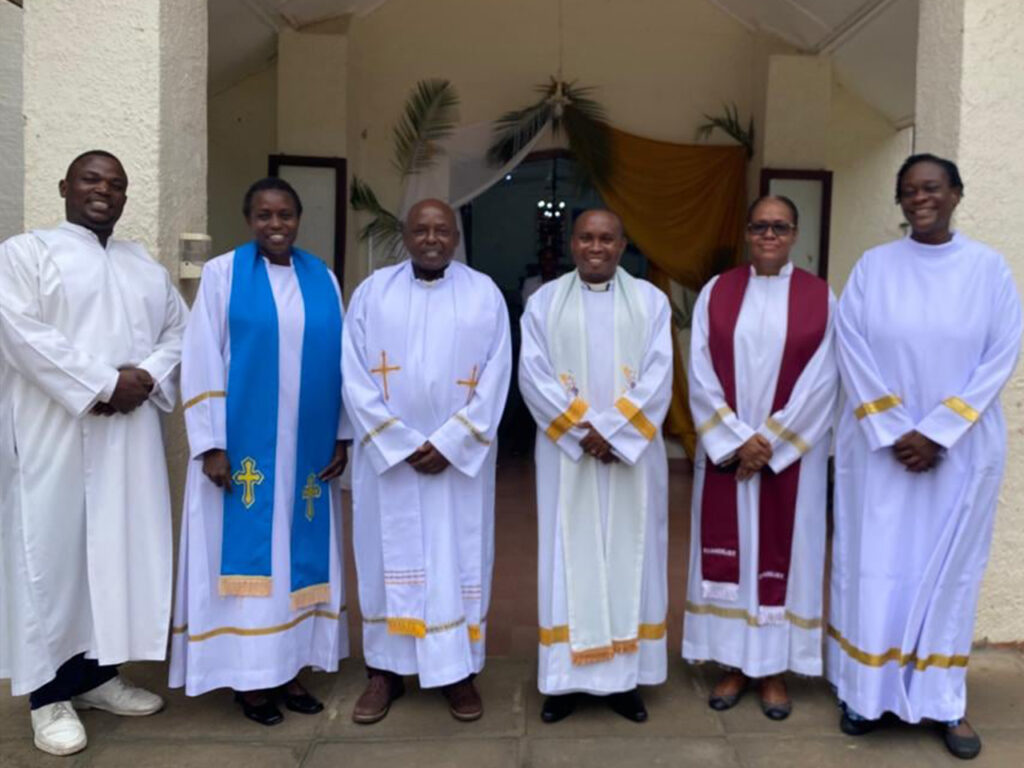
About Us
A.C.K St. Peter’s Church was founded in 1953 following the coronation of Queen Elizabeth. St. Peter’s Church began as a Banda-like structure, exceptionally designed by cement and makuti. In 1960 however, the Church raised enough money, and it was then that the Church was able to reconstruct a more conventionally designed structure that steered away from the traditional Banda model. In 1960, following the new structural design Queen Elizabeth donated a bible which was provided as a sign of commemoration of the new Church. During this time, the congregation was comprised of Caucasians, and for the most part, most locals were oblivious of the existence of the Church.
The segregation resulted in Archbishop Leonard Beatcher declining to consecrate the Church. Bishop Peter Wangombe, who at the time was in the region and learned of this, proceeded to consecrate the Church in 1964, thereby officiating it as a house of worship. In 1988, Reverend Newman Wangombe arrived from Nairobi to Mombasa following an invitation by Ann Reinsforth, Chair of The Church Committee, to cover the mass as the priest had taken leave. His commendable ministry astounded Ann Reinsforth who referred to the Reverend as “a light under the table.” Upon learning of Newman Wangombe’s positive contributions to the Church, Bishop Nzanu acknowledged the effort and sent Reverend Paultrich to join him in the ministry. This initiative then reinforced the modern-day renowned St. Peter’s Church Nyali.
As segregation ended and the Caucasians left the Church, more local populations joined the Church leading to the congregation’s growth. With contributions raised by the congregation and the efforts of a few members, the Church was able to give some degree of dazzle to the interior decoration of the Church; integrating a new carpet, and new seats, among others. With continuous and relatively substantial growth across all avenues the Church was able to build and offer support to other relative churches.
Although St. Peter’s Church Nyali acted as a subsidiary branch of the Mombasa Memorial Cathedral, it is now recognized as a stand-alone church which helped grow other branches spread out across the coast region icluding Kanamai, Mtwapa, Bodoe, Kikambala, as well as in Malindi and Lamu. The Church has since offered support to other establishments, such as the Lamu church. The Church has adopted a community-centric model, which enables them to promote community growth and sustainability. The Church has similarly aided the plight of street children in Mombasa, offering them education through the Keresha initiative.
Although the first Vicar Rev. Paultrich has since left the Church after being promoted to a Bishop and thus, having to transfer from Nyali to Meru, he left the Church to Reverend Mrurtu, who then transferred the leadership to Father Steve, then Dr. Dorcas and then finally to the Archdeacon Samuel Nguma. Reverend Noondi channels the Church with the aid of the verger wardens, church vergers, and the wardens. The Church’s growth is commendable, which has positively impacted the quality of worship.